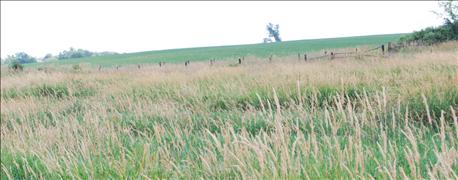
Minnesota’s Farm Service Agency is reminding farmers that the sign-up deadline for the Conservation Reserve Program is Friday, Feb. 26.
USDA said it expects this general sign-up period to be one of the most competitive in history, due to a statutory limit on the number of acres that can be enrolled in the program.
The most competitive applications will be those that combine multiple conservation benefits, such as water quality and wildlife habitat, USDA officials said.
CRP provides financial incentives to farmers and ranchers to remove environmentally sensitive agricultural land from production and plant them with certain grasses, shrubs and trees.

USDA expects stiff competition for CRP acres
In Minnesota, as of Feb. 1, there are 1.1 million active CRP acres with contracts for 91,381 acres expiring Sept. 30.
In 2017 and 2018, contracts for 96,920 acres and 200,636 acres, respectively, will expire in Minnesota.
Since 1985, CRP has protected more than 170,000 stream miles with forests and grasses and restored 2.7 million acres of wetland. CRP also has sequestered an annual average of 49 million tons of greenhouse gases, equal to taking 9 million cars off the road; prevented 9 billion tons of soil from erosion, enough to fill 600 million dump trucks; and reduced nitrogen and phosphorous runoff by 95% and 85%, respectively, according to USDA.
As of Feb. 1, 23.3 million national active CRP acres were enrolled, with contracts for more than 1.6 million acres set to expire this fall. Contracts will expire in 2017 and 2018 for nearly 2.5 million acres and nearly 1.5 million acres, respectively.
The statutory cap on acres that can be enrolled is 24 million acres. Submissions will be ranked according to environmental benefits in comparison to all other offers nationwide. USDA will announce accepted offers after the enrollment period ends and offers are reviewed.
In 2015, a record number of continuous CRP acres were enrolled, totaling more than 830,000 acres. This record sign-up came after a May 2015 announcement that an additional 800,000 acres would be accepted for key natural resource enhancements. Since then, wetland restorations increased by 77,000 acres, duck nesting habitats have increased 35,000 acres and other wildlife habitat has increased 255,000 acres within the CRP State Acres for Wildlife Enhancement.
About the Author(s)
You May Also Like






